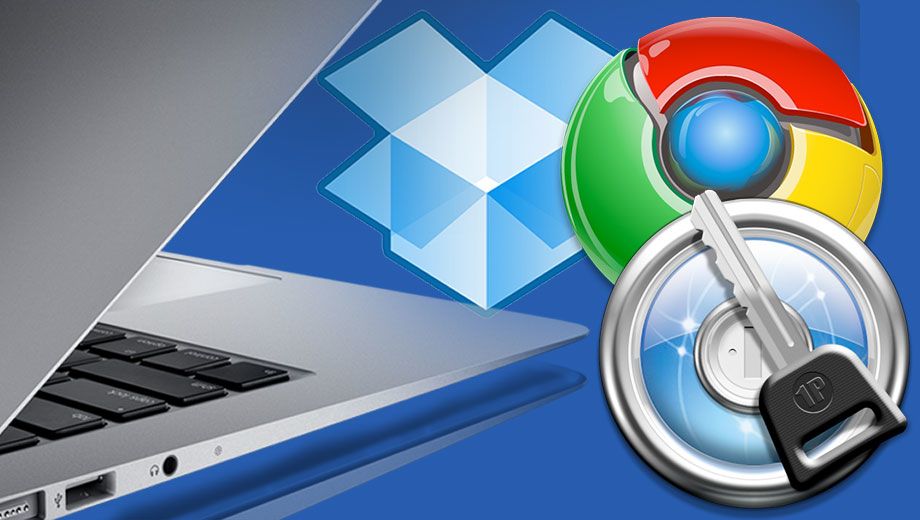There comes a time in every business traveller's life when the realisation hits that carrying a 3KG notebook is generally incompatible with the cabin baggage restrictions applied by airlines. One corporate-issue notebook and a wheely-bag adds up to nearly the 6-7KG cabin baggage limit, leaving little allowance for anything else. With airline profit margins being cut razor-thin, cabin baggage allowances are being increasingly policed by gate staff.
As a result, thin (sub-1.5cm) and light (sub-1.5KG) notebooks are coveted bling for frequent travellers. We recently looked at the top 5 thin-and-light notebooks on the Australian market.
However, getting a notebook down to waifish dimensions usually means leaving something out of the system -- often storage.
Even Apple's svelte new second-generation MacBook Air has some limitations that you'll need to address if you want to use it as a notebook while travelling: the basic models only come with 64GB or 128GB storage, and the maximum capacity available is 256GB.
The key to making use of a computer like the MacBook Air is to use software to keep a subset of your files on the MacBook Air synced with your main computer, so you never have to be manually transferring files between them, or worrying about which computer has the up-to-date version.
How to keep files in sync between computers
A great way to keep files in sync is via Dropbox, which is free for 2GB storage, $US10 ($A10) per month for 50GB or $US20 ($A20) per month for 100GB storage. Dropbox sits on both computers silently in the background keeping everything in the Dropbox folder in sync, and is remarkable for being one program that will absolutely never, ever bug you with a pop-up error message.
Although the way Dropbox works is that any changes to your files are uploaded to Dropbox's internet servers and then downloaded onto other computers syncing with the same Dropbox account, if you have two computers on the same home or office network, the files will be transferred at high speed across the local network, rather than via the internet. This allows very large changes to your Dropbox to be synced in minutes rather than hours.
How to keep email in sync between computers
To keep email in sync between the two computers, you can use an email provider such as Gmail that provides IMAP access to the mail servers, which keeps read-status for emails in sync between the mail server and multiple computers. You can forward all your work email to Gmail and use it as your central point for work and personal emails in one spot. Of course, if your work uses a Microsoft Exchange Server, ask your IT people if you can access the Exchange server through Outlook when travelling, so your mail stays in sync between your work PC and your lightweight laptop.
How to keep contacts in sync between computers
To keep your address book contacts in sync with Gmail on Windows, if you have an iPhone or iPod Touch, you can use iTunes (free) to automatically sync your Google contacts with your Windows Contacts or Outlook. Follow Apple's instructions here. If you don't have an iPhone, you can try OggSync for Outlook.
On a Mac, use SyncMan ($US14.99 / $A15) which does a fantastic job of syncing contacts between multiple computers and a Gmail or Google Apps account. (Don't use Apple's inbuilt Gmail contacts sync in Address Book -- it has a habit of duplicating contacts endlessly, losing information from contacts gradually and having sync errors.)
How to keep calendars in sync between computers
To keep iCal calendars in sync between Windows computers, Google provides Google Outlook Calendar Sync, which will sync calendars to and from Outlook/Gmail.
On Macs, use BusySync ($US69/$A69.40 for up to five computers), which syncs calendars to Google Calendar (part of Gmail or Google Apps).
How to keep bookmarks and browser passwords in sync between computers
To keep your bookmarks in sync with your main computer, install Xmarks on your web browsers. Apart from keeping multiple computers in sync, Xmarks also has the secondary benefit of keeping numerous types of web browsers on each computer – such as Chrome, Firefox and Safari -- in sync bookmarks-wise.
To keep web browser passwords in sync between Macs and PCs, use 1Password ($US69.95/$A70.35) for up to five computers), which saves logins when you type them into any browser, and allows you to sync them between computers and your iPad/iPhone using Dropbox.
1Password is great because all your passwords are also accessible in any browser on your computer -- not just one. However, if you don't want to spend any money, you can just use the Google Chrome browser, which provides bookmark/password sync between computers free of charge. Chrome is available for both Windows and Mac.


Qantas - Qantas Frequent Flyer
29 Nov 2010
Total posts 1
If people are looking at Dropbox, I recommend too that they check out Sugarsync. Now has 5gb free and it can sync any folder on your PC. I used to have issues when I didn't drop a file into the Dropbox folder, but Sugarsync can sync your entire My Docs, My Pics, or any folder on your PC.
Hi Guest, join in the discussion on Top 5 apps for thin and light notebooks